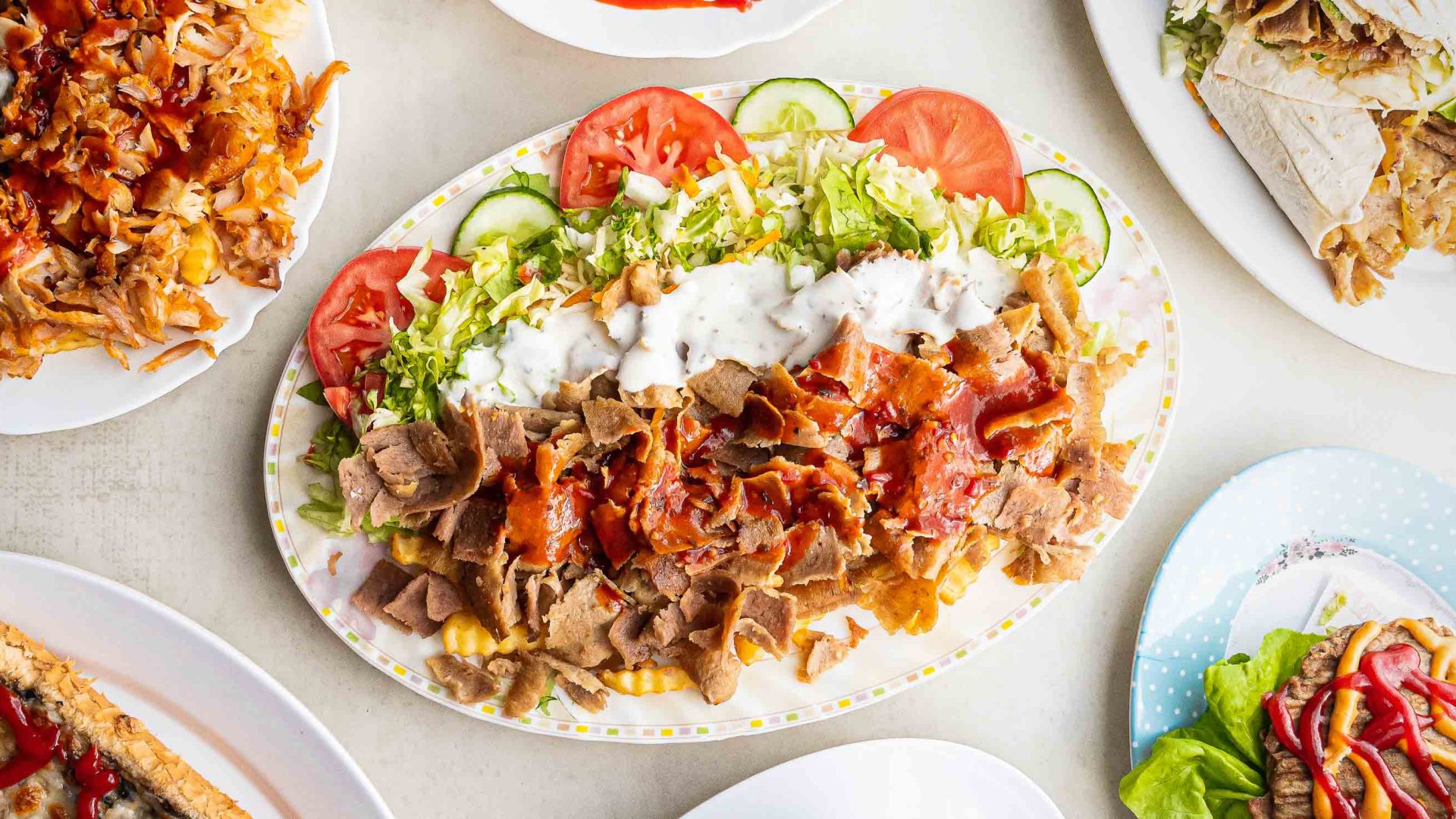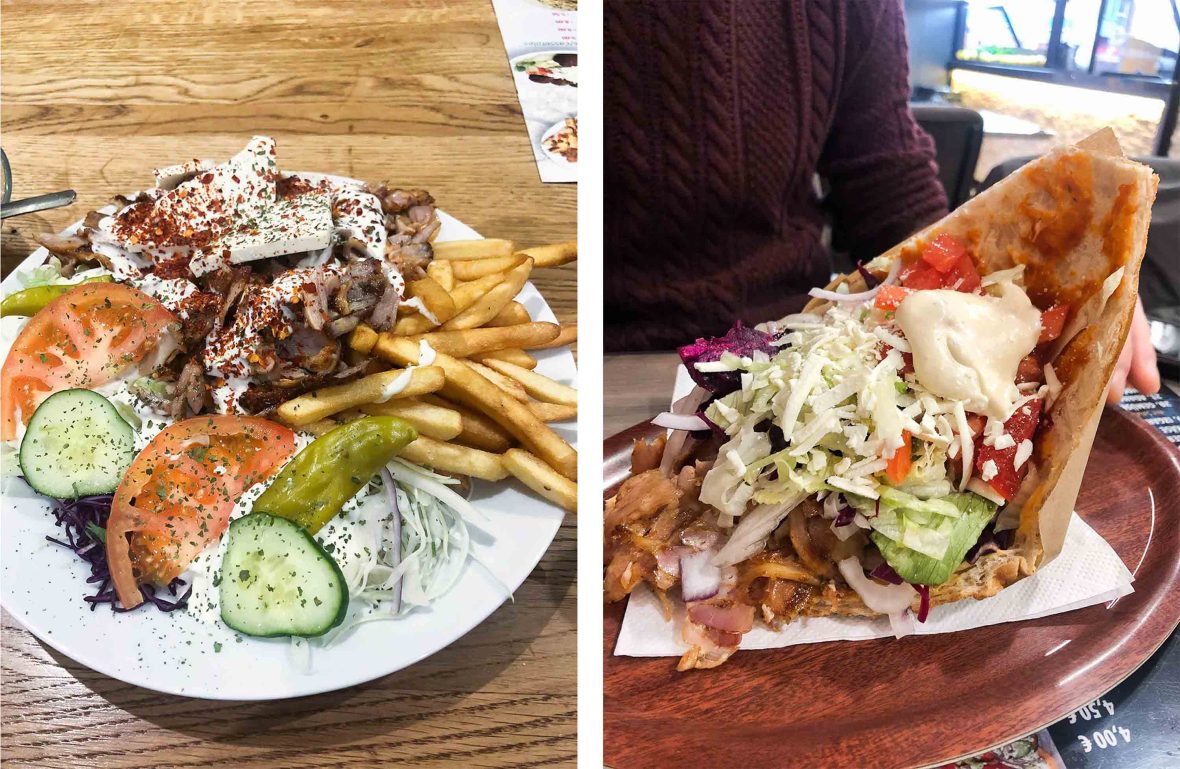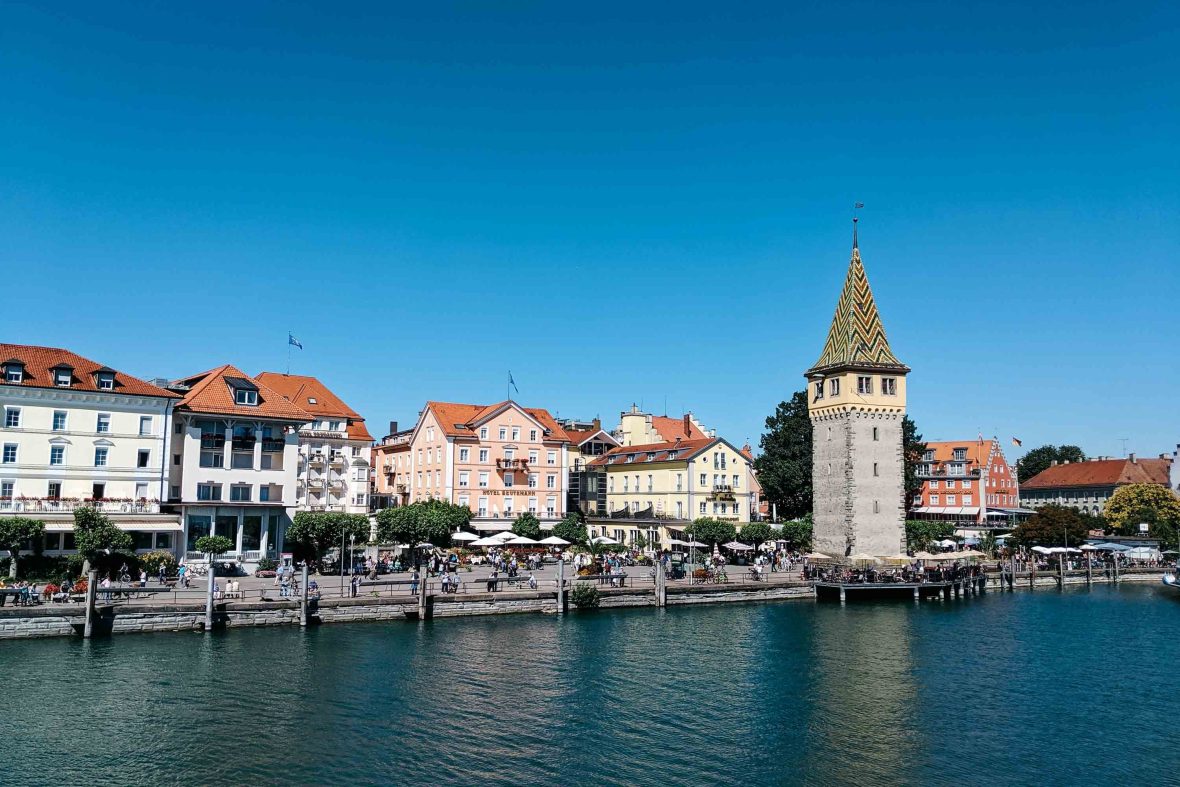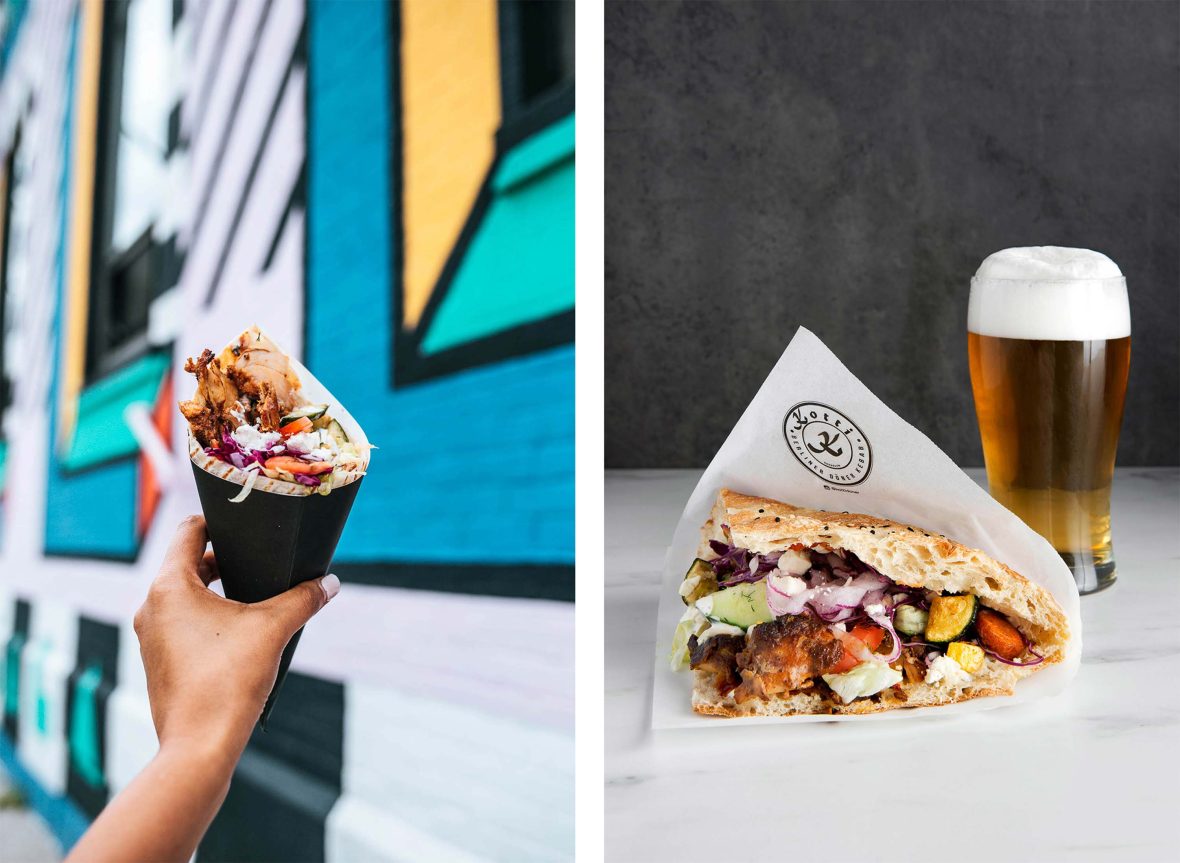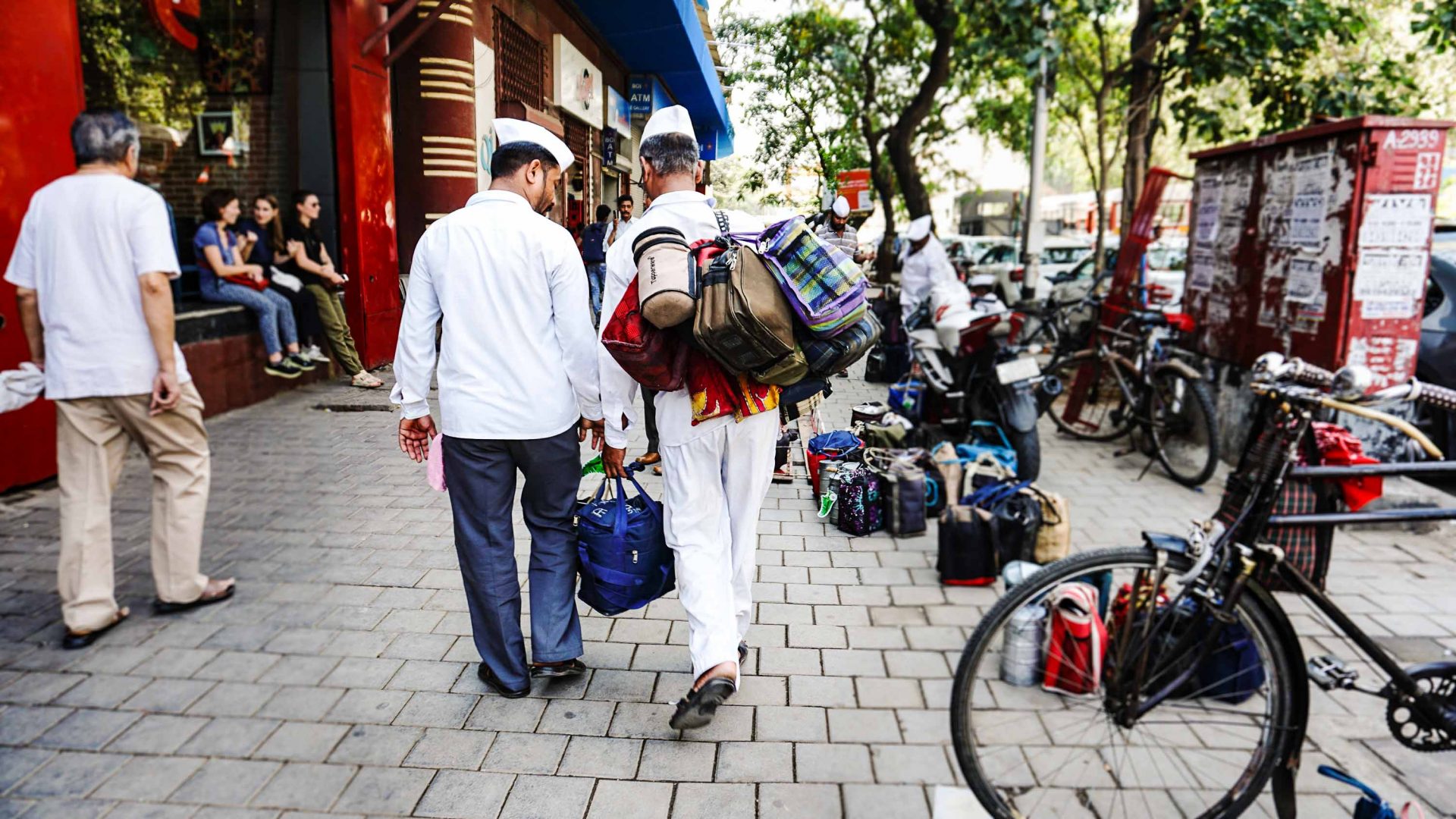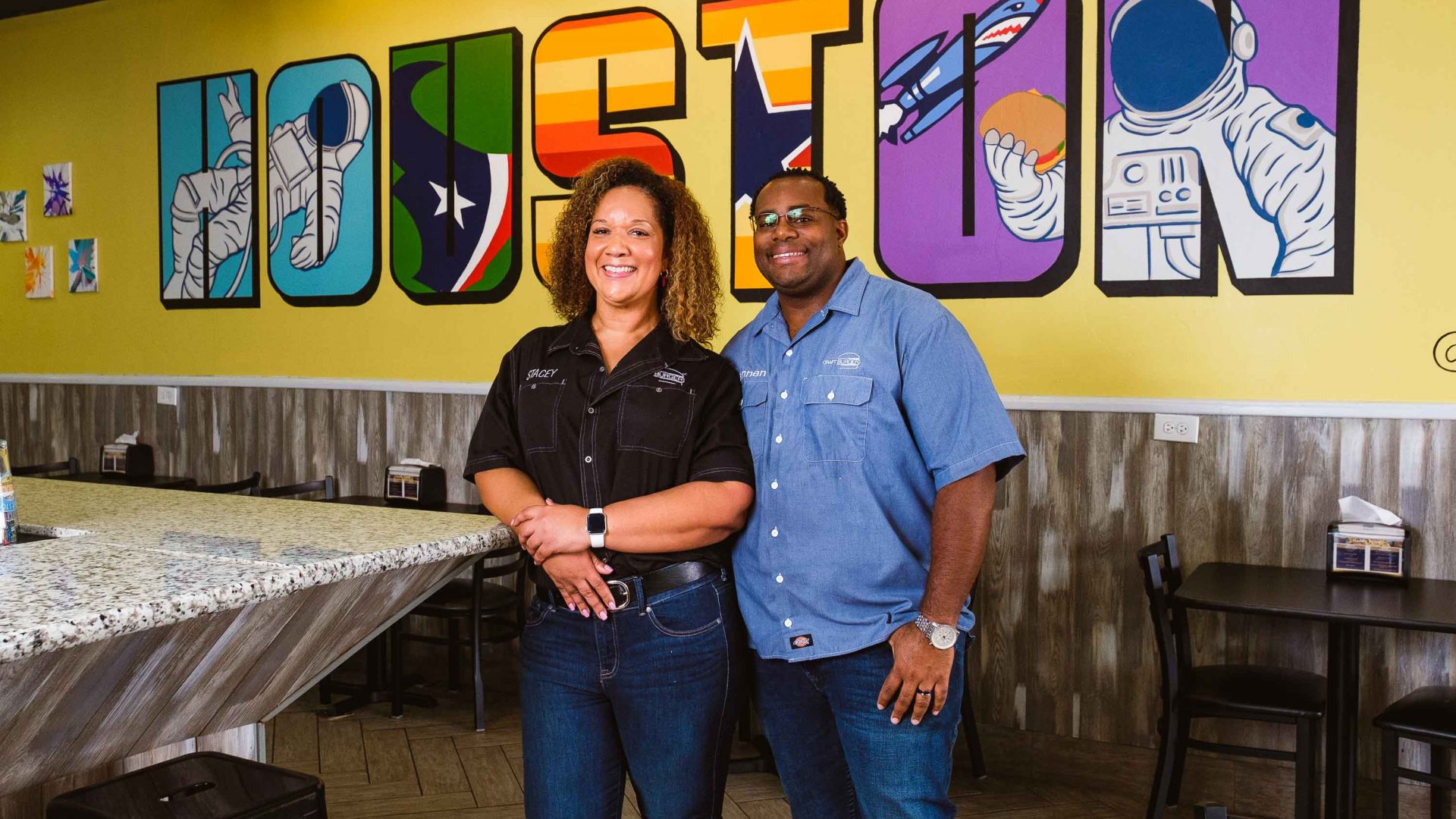Humble street food or a drunken late-night staple? Either way, the döner kebab is no ordinary sandwich. Zanny Steffgen road trips around Germany to discover the variety of this popular dish and the impact of Turkish immigrants on German society since the 1960s.
On this trip, we spent the first week catching up with family and downing Ilan döner before hitting the road. In Freiburg, not far from the city’s imposing 13th-century cathedral, we found one of the few kebab shops open on a Sunday. Even if the door was still locked when we approached, the shop owner ushered us inside, as it was so cold our breath almost crystallized. Inside, we warmed up with tea and ate an excellent, but different, version of kebab.
On this one, there was no peperoncino, no cucumber and no white cabbage, but the bread was toasted until crunchy and topped with sesame seeds and the flavorful meat flecked with parsley—a solid 8/10, we decided.
It was those human needs and longings that introduced döner to Germany. While several different Turkish immigrants claim to have made the first-ever döner kebab, Kadir Nurman, who operated a döner stand in Berlin, is considered the official inventor. The döner that millions of Germans enjoy today is different from the original—out of convenience, döner became a sandwich, and soon, popular demand led to a choice of herb, spicy, garlic yogurt, or white sauces.
Döner has now made it full circle, according to Şivan Gergersoy who lived in Munich for 15 years before opening a shop called Berlin Döner in Adana, Turkiye. “People here love döner German style,” he says.
As we sped down the autobahn, glimpsing countryside villages cloaked with fog, I mused over how my husband’s favorite sandwich has transformed in Germany.
At Sultan in Nuremberg (where, dönered-out, I ate lentil soup), the buns were long and thin rather than the round ones we’d come across in Munich, and the sauces differed from those available in the southwest. I’d heard rumors from my sister-in-law of a shop in Stuttgart that sneaks potatoes into their döner and saw gemüse döner filled with roasted veggies in Berlin, where kebab comes in triangular slices of pide bread.
The döner evolution continues at Emre’s Kotti Berliner Döner Kebab shops in New York, where he offers döner burgers and bowls that are popular with Americans—representing what Emre calls a “mosaic of different cultures.” While tensions persist between Turkish Germans and their fellow countrymen, food can be a gateway to greater cultural understanding.
Our road trip ended in Berlin, the birthplace of döner, where Philipp and I strolled through Neukölln in search of a döner shop in one of Berlin’s most diverse immigrant neighborhoods. Although the restaurant we found was out of gemüse that day, learning that the vegetable-laden döner trend started in the last two decades made me excited for the sandwich’s future. As Emre puts it, “I think the chapter on the döner kebab has not ended… it’s maybe even just beginning.”
